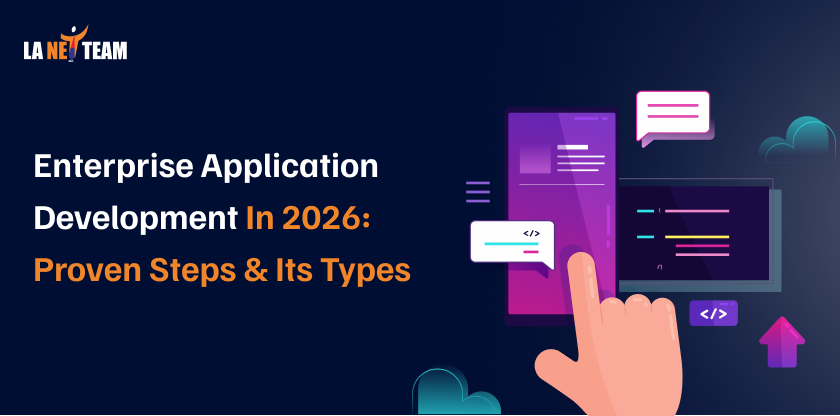Enterprise applications development is the power of major players like Amazon, Netflix, and Uber. These apps run smoothly, despite… millions of users use them daily.
So, what is it in simple words?
Enterprise application development is the process of building big software systems that run key parts of businesses. Like operations, data, and customer service.
As per the 2025 IBM report, 35% of organizations have already started using enterprise applications. And the number of users is growing every year.
Today, in 2026, businesses need apps that can fulfill users’ needs. That’s why the right approach is important to build enterprise application software.
What Is Enterprise Software Development?
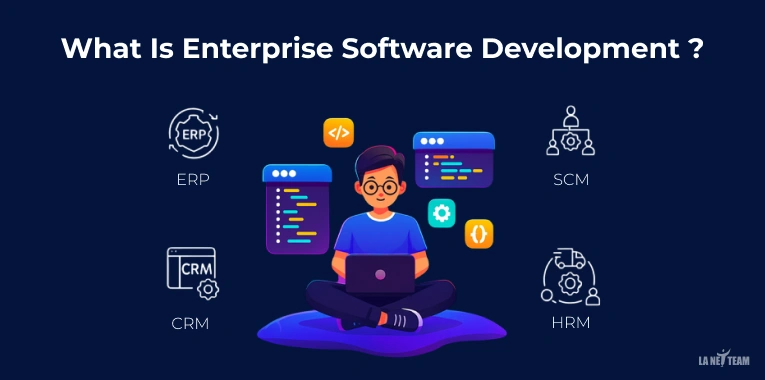
Enterprise software development is a type of software built for businesses to handle big and complex tasks. It helps companies manage things like money, customers, operations, and data in one place.
Unlike regular software, enterprise software is powerful. As, it gives real-time insights, handles huge amounts of data, and integrates different departments.
Some popular examples are:
- CRM platforms like Salesforce & Centripe for handling customer data.
- ERP systems like SAP and Oracle are used for managing processes.
- Project management tools like Asana.
- Collaboration tools like Microsoft Teams and Slack.
Enterprise software development means creating the above kinds of applications for businesses. It’s different from normal app development because it requires more features, stronger security, and the ability to grow a business.
What are the Common types of Enterprise Software Development?
1. Enterprise Resource Planning (ERP):
Enterprise resource planning is an all-in-one package for your company. With ERP, you no longer need separate apps for money, inventory, or production.
This makes it easier for managers to see what’s happening across the business.
For example, Companies like Toyota uses ERP. To track parts, manage budgets, and control factories all in a single system.
2. Customer Relationship Management (CRM):
CRM by name states that it is about handling everything related to customers. This type of ESD helps in storing details of customers, tracking sales, and reminding the team to take follow-up.
With CRM, businesses sell more and keep customers happy.
3. Supply Chain Management (SCM):
Supply chain management software, by the name states, is about keeping track of how a product is moved. From suppliers to finally to customers. This lets businesses avoid delays, cut down the cost, and make sure the product is delivered on time.
4. Business Intelligence (BI):
BI tools are like a business’s ‘REPORT CARD’. They take loads of raw data and turn it into clear charts, reports, and dashboards.
Example: Big companies like Netflix uses BI to study viewing habits and suggesting shows to users.
5. Human Resource Management (HRM):
HRM is a tool that handles all things about employees. This type of ESD helps in automating payroll, hiring, training, and even performance reviews. By doing this, it helps HR from drowning in heavy paperwork and also keeps employees happy.
Enterprise Software Development Vs Standard Software
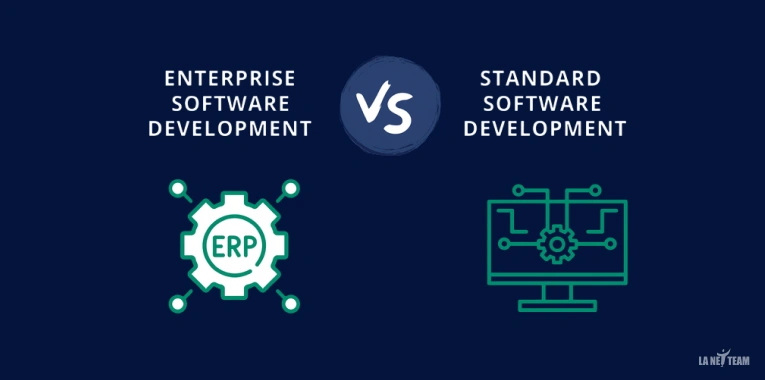
When it’s about using software, not all are built for the same solution.
The most demanded difference between Enterprise software and standard software is what people get confused about.
Let’s break it down:
| Feature | Enterprise Software Development | Standard Software |
|---|---|---|
| Purpose | Designed for large organizations to manage complex business processes. | Designed for general users or small-scale needs. |
| Customization | Very flexible with the needs of certain businesses. | Slight customization; mostly ready-to-use. |
| User Base | Supports thousands of users across departments. | Supports a small number of users. |
| Integration | Can integrate with multiple internal systems and third-party software. | Supports a small number of users. |
| Cost | High cost due to complexity, customization, and scale. | Low to moderate cost. |
| Implementation Time | Long (months to years) because of development and testing. | Short (days to weeks). |
| Maintenance & Support | Continuous support and updates are required. | Less frequent updates and maintenance. |
| Security | Advanced security features for sensitive company data. | Basic security features. |
| Scalability | Highly scalable to grow with the business. | Limited scalability. |
| Examples | SAP, Oracle, Microsoft Dynamics 365. | QuickBooks, Adobe Photoshop, and Microsoft Office. |
Step-by-step Process Of Enterprise Software Development
Here is the simple breakdown of the process:
Step 1: Analysis
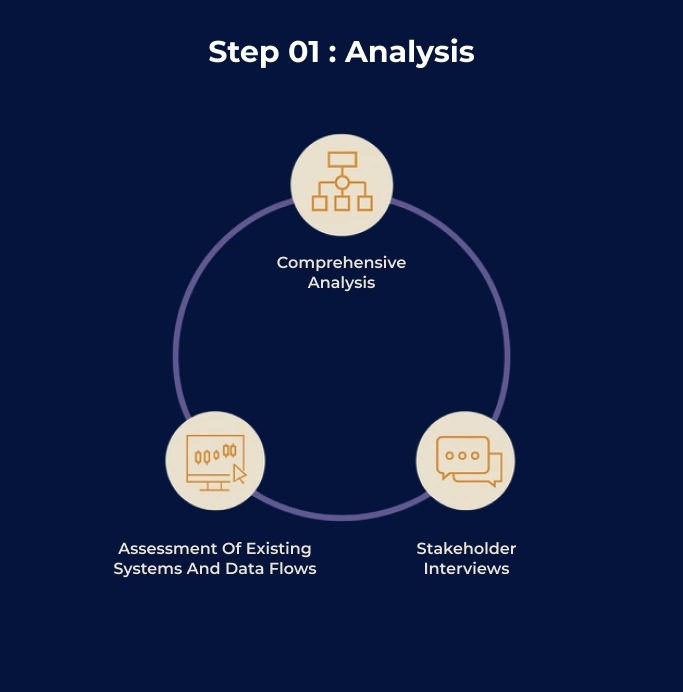
Before building any software team needs to first know in depth about the business. This can be done by
- Talking to different departments,
- Studying how work is done, and
- Spotting the problems
Let’s understand it with an example:
Imagine a company has its customers’ information in 5 different tools or apps. This will make it harder for the team to understand it, and it will be easy to make mistakes.
The point of the example is: When building software, you don’t just fix problems for today. You also think about future needs and make sure the solution will work well as the company grows.
Step 2: System Design
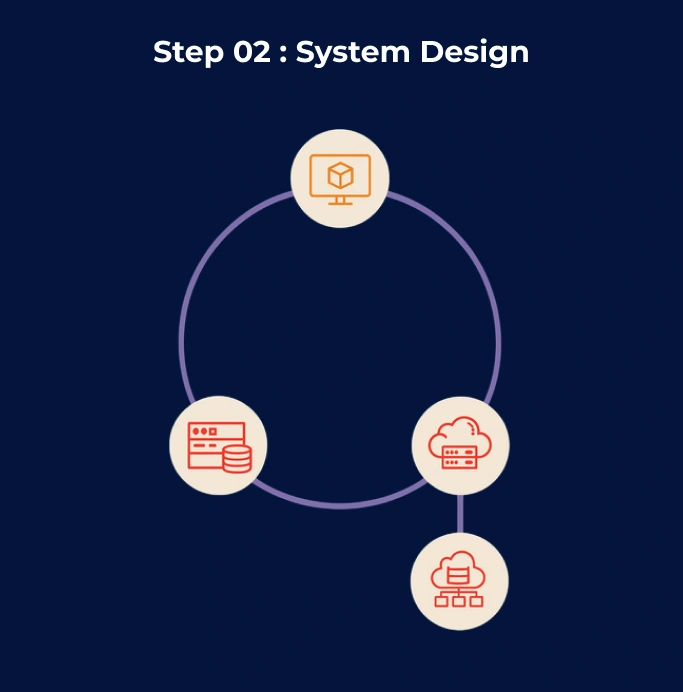
After you know the problem, this step involves designing a solution to solve the problem.
Here’s what to do:
- Architecture: Decide what will be the main structure so that the software can handle more users and data as the company grows.
- Tools & tech: By choosing the programming languages, databases, and frameworks, you can solve the problem and make the software the best.
- Security: To ensure there’s no problem, make sure everything is ‘SAFE’. By using passwords, encryption, and secure logins.
- Integration: Make sure the new software can also work well with the old tools you use. Such as CRM, Payroll, or other systems.
- Quality check: Plan how you will test the software to catch mistakes before it goes live.
Step 3: Implementation (Building the software)
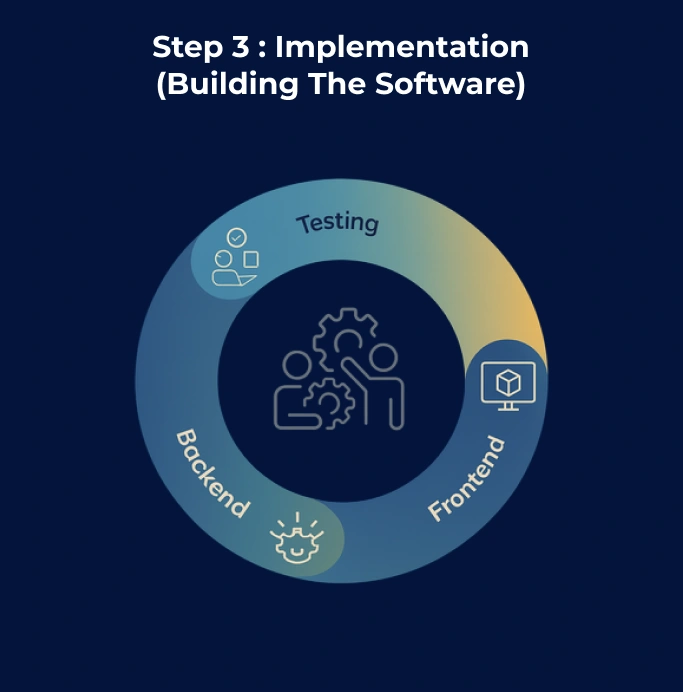
This is the step where the software actually gets made.
- Back-end: This is the engine of the software. It looks into how software stores information, processes it, and shares it.
- Front-end: This is the dashboard and buttons of the software. In short, it is what users see and interact with.
- Testing: Testing is really important to ensure everything is working as planned. Every feature is tested well to make sure it works well.
Step 4: Data Migration
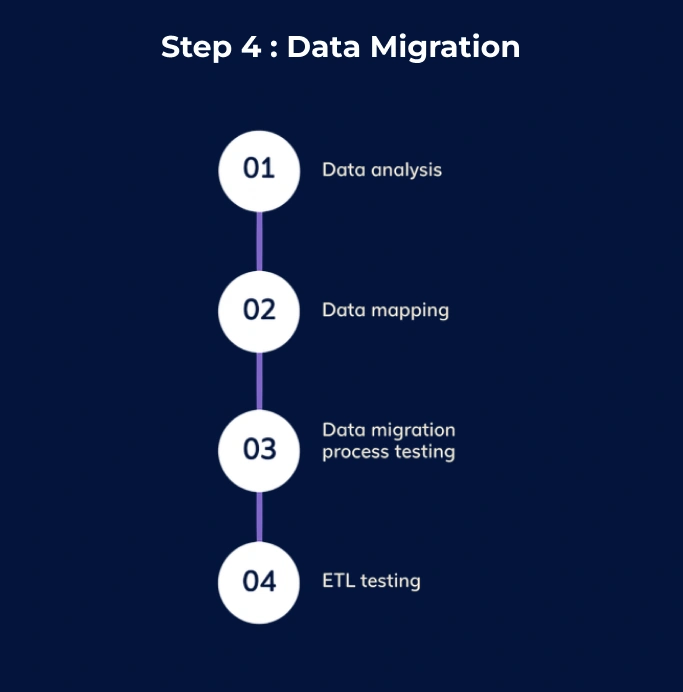
Most of the companies already have a lot of old data in their old systems. Therefore, this step involves moving data safely into the new software.
- Clean it up: Fix any mistakes or missing info in the old data.
- Move it carefully: Use a planned process (called ETL) to transfer everything.
- Check again: Make sure nothing got lost or broken during the move.
Example: If a hospital starts using a new system, all patient records must be moved correctly so nothing is missing or messed up.
Step 5: Compliance
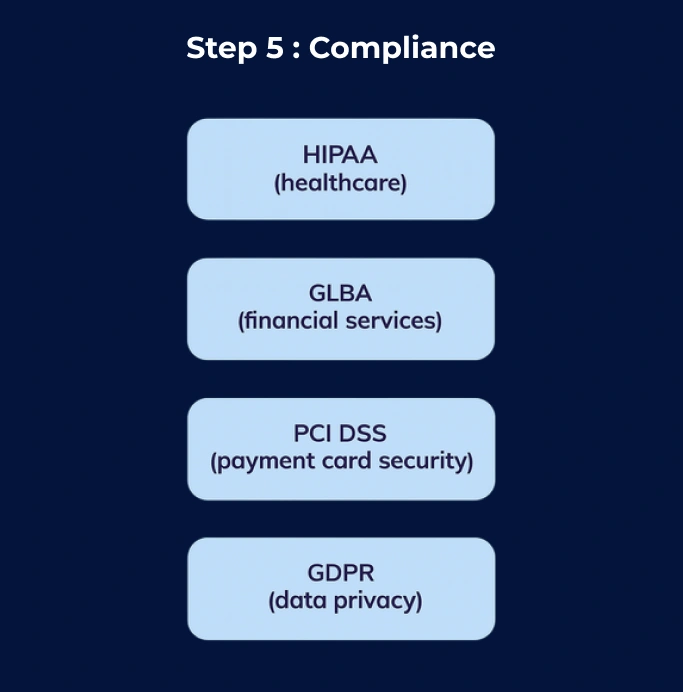
Big businesses have important and private data. Such as bank details, health info, or personal info. Therefore, to make the data stay safe from getting misuse, they should follow rules depending upon the industry.
Below are the data protection and privacy regulations that companies should follow:
- HIPAA (Health Insurance Portability and Accountability Act):
A law of the US that states patient health information stays private and secure. - GLBA (Gramm-Leach-Bliley Act):
A law of the US that protects customers’ financial information held by banks and financial companies. - PCI DSS (Payment Card Industry Data Security Standard):
This law ensures that credit card data is handled safely. - GDPR (General Data Protection Regulation):
A European law that protects the personal data of people.
Step 6: Iterative Development (Improving continuously)
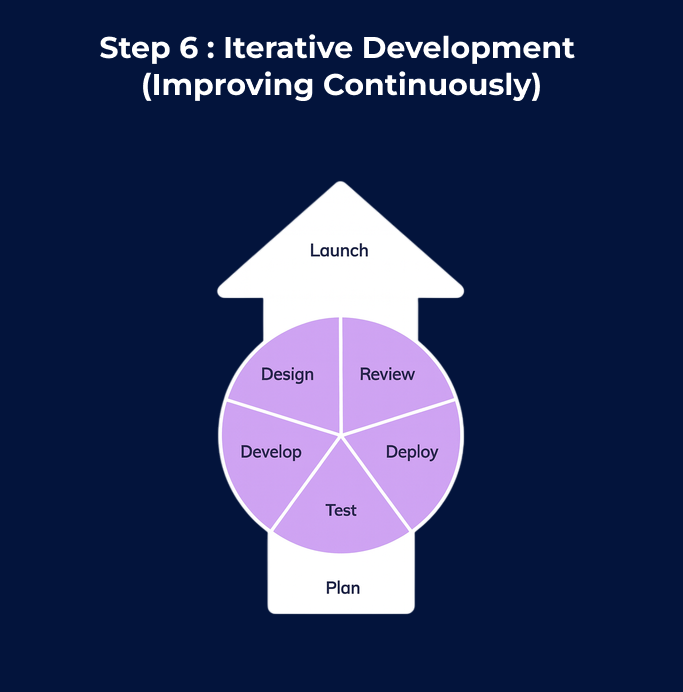
Lastly, the most important step is about keeping the software fresh and useful. Ever after the software is launched, it needs regular updates and improvements.
Here’s what happens in this stage:
- Listening to users: The team listens to what users like and dislike and what they consider hard. This assists in determining what needs to be improved.
- Fixing problems: Any bugs, glitches, and slow areas are fixed fast.
- Adding new features: Depending on the feedback and needs of the business, new features are added to make the software more useful.
- Watching usage: This will give analytics of how the software is being used by people, which features are popular, and what features require improvement.
- Keeping up with trends: Market research makes the software keep up with the current trends and remain competitive.
Let’s Wrap This Up
Building enterprise software solves real business problems.
You can’t just build an app and forget about it…. YOU need to plan it, design it, and keep improving it by following the steps.
At the end of the day, it is not just software you are creating. It is the backbone of how your business runs.
Right process + right tech + right people = software that actually works.
